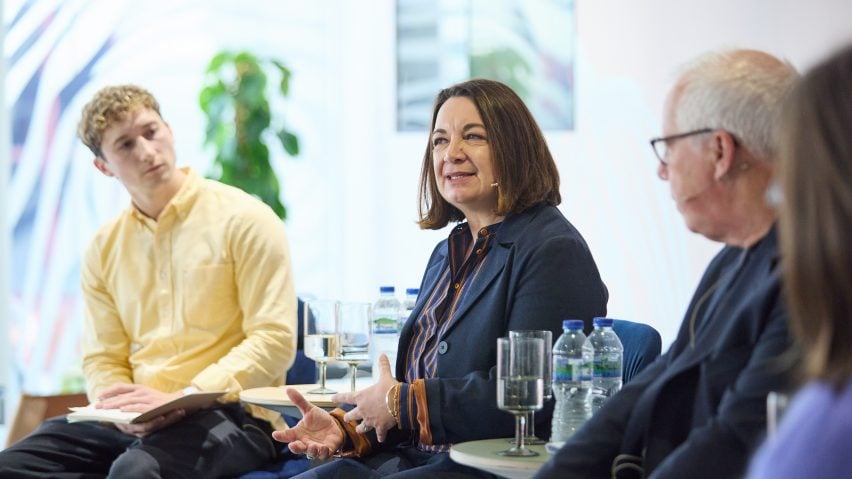
Ping-pong tables are out and "control" is in, say panellists addressing Joy at Work
Promotion: workers are returning to the office and workplace design is set to cater to their needs like never before, according to speakers at a panel discussion hosted by Dezeen and furniture brand Steelcase.
The panel, titled Joy at Work, took place at Steelcase's London showroom and featured the company's EMEA director for workplace design and consulting Elena de Kan, architect and Foster + Partners partner Simona Bencini, and office design expert and WorkTech Academy chair Jeremy Myerson, with Dezeen features editor Nat Barker moderating.
The speakers addressed themes of joyful work environments, wellness and whether there has been a fundamental shift in the relationship between people and their workplaces.
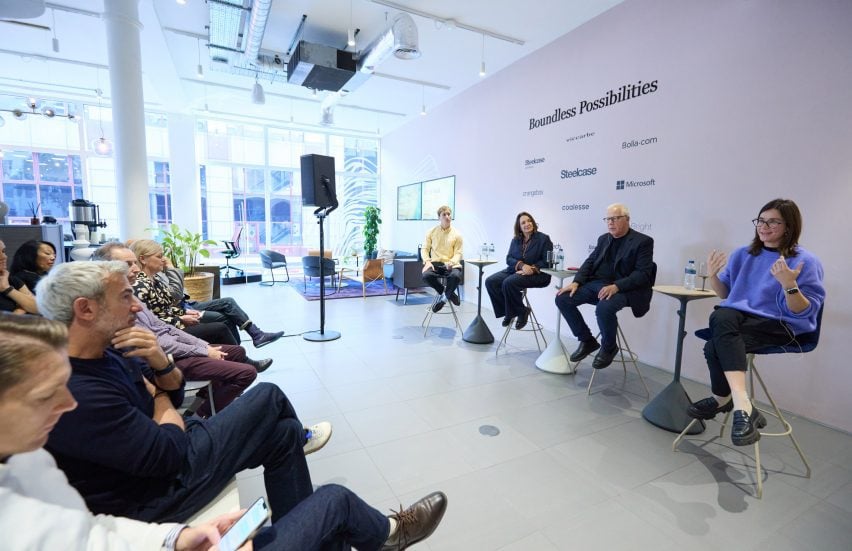
Referencing the once popular approach of filling offices with slides and ping-pong tables, as exemplified by tech firms in the 2010s, the panellists stressed that trends in office design have moved on.
"If you look at the world of environmental psychology, there's a lot of people doing a lot of research out there and there's a very consistent pattern," said Myerson. "What makes people comfortable and satisfied at work? The number one criteria is having a sense of control."
"This manifests itself in a variety of ways, but having autonomy and choice and control, that is the number one thing."
Reflecting on his 2016 Dezeen interview in which he lambasted Google's office design, Myerson said the problem with the "playground approach" was that people were being forced to fit into a workplace landscape rather than having the ability to choose the setting that worked for them.
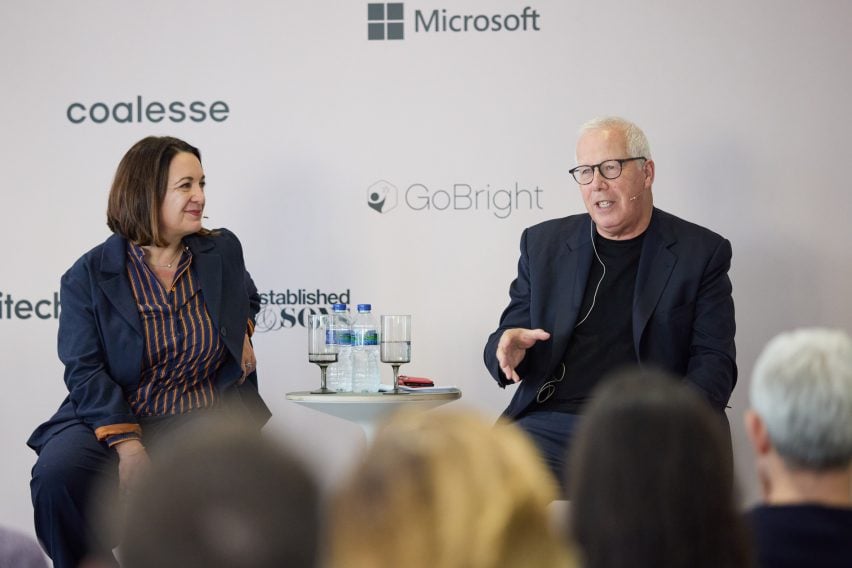
"I also felt that there was something faux, something not right, about pretending that work is fun, that it's a playground," said Myerson. "It's not. Work is work."
"People want to get a sense of purpose, they want to belong, they want to feel they're doing a good job. And that's why I was against the apparatus of play and fun. I think we need to look at fun at a more profound level."
De Kan, who said the topic of how space shapes behaviour has been her passion since university, agreed that joy in the context of work looked different to joy outside of it.
"We enjoy that moment where our brains start firing," said De Kan. "This is where joy and work is inseparable. And this is what we want to support in the places that we come to."
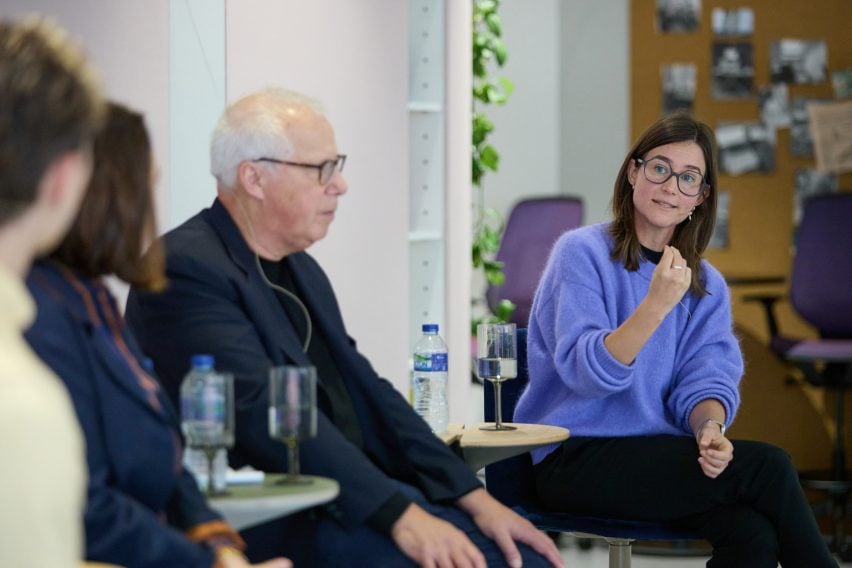
She also pointed out that "toxic positivity" could negate the good intentions of overly exuberant workplace design.
"There's a danger with that if we focus too much on the fun element," she said. "To say that we have to have fun at all times, at every moment, and it's the driving element, no – the driving element is to do something well together."
All of the panellists agreed that wellbeing was foundational to what could be thought of as "joy" in the workplace, with interaction being another necessity.
Bencini referenced Foster + Partners' Stirling Prize-winning Bloomberg building, for which they worked alongside Steelcase. The building is seen as highly influential in the office design field and includes an enormous spiral staircase unfurling through its centre.
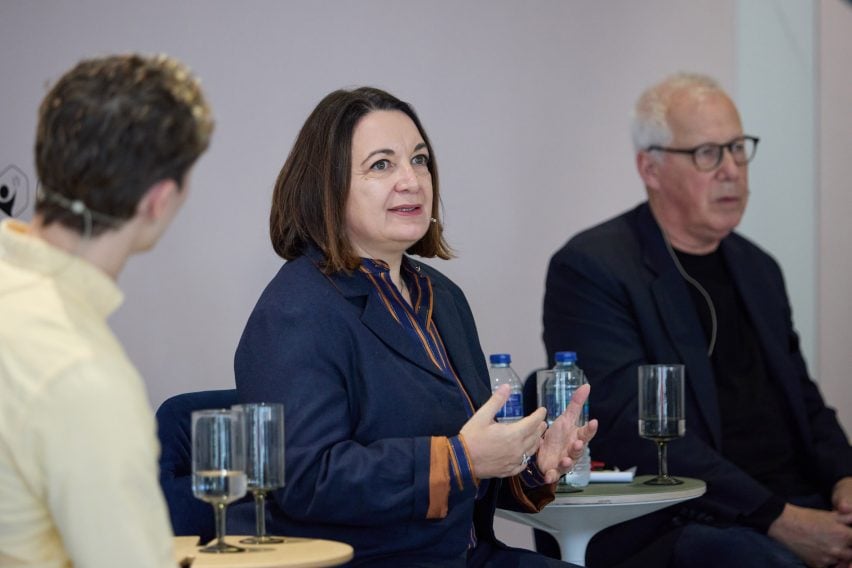
"Of course we had the normal cores with the stairs, but Michael Bloomberg said, 'you can't bump into people in the staircase, it's too tight'," Bencini said. "In the lift, people want to just enter the lift and exit... We need to create something where people bump into each other and slowly walk up the staircase and keep talking and exchanging ideas."
"The central staircase became a point of contact between people, between departments," she continued. "The whole office was designed to be a place where people interact and create new ideas."
Overall, Myerson said, real engagement with ideas around inclusivity and community is bringing about more positive office designs than ever, and the workplace itself was proving resilient to the pandemic-triggered work-from-home boom.
"If you're in the office design or development sector, there is reason for optimism. 2024 has seen a steady swing in terms of return to the office," said Myerson. "The latest figures from McKinsey [show] globally we're in 3.5 days a week, which is not far off pre-pandemic levels."
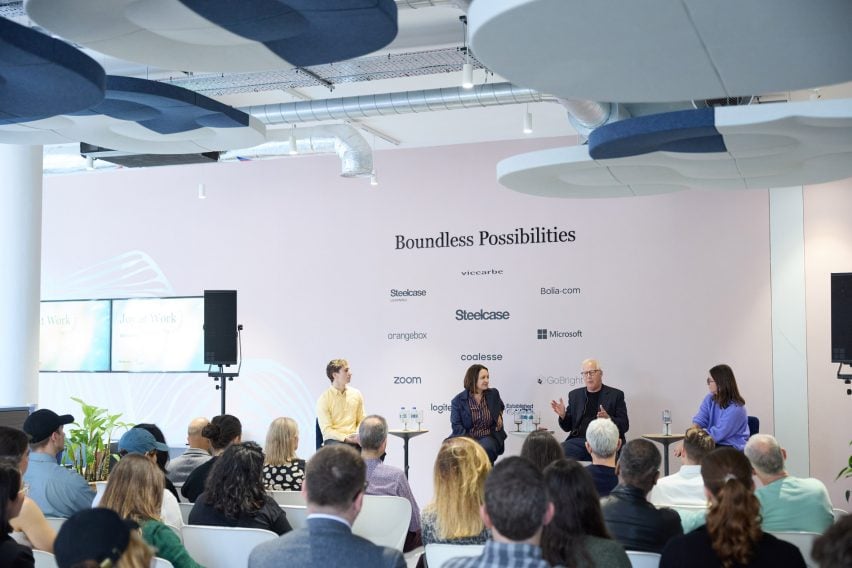
"I think the disruption between office and home is that people want to go back to the office, but they don't want to go back to the same pre-pandemic office," he continued. "Companies are introducing a lot of amenities and critically, they're also changing the relationship with the neighbourhood, the district and the city."
"It's more porous, it's more permeable, there's much more alliances with restaurants and amenities."
He gave the example of Booking.com offices in Amsterdam, which include a staff restaurant run by a refugee charity giving jobs to refugees.
"What they're trying to say is the office has got to have some community purpose, it's got to have some social value," said Myerson. "I'm hugely optimistic for the office sector, and I wasn't a couple of years ago."
"The pandemic has unlocked some of the entrenched attitudes and now we're getting some real design creativity and social enterprise around it."
The Joy at Work panel took place at the Steelcase WorkLife Center in London on Thursday, 17 October.
For more information on Steelcase, see the company's website.
Partnership content
This article was written by Dezeen for Steelcase as part of a partnership. Find out more about Dezeen partnership content here.